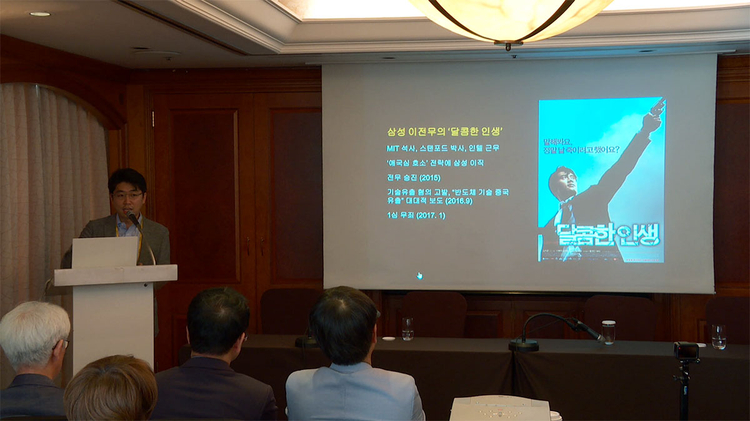
Where Should Korean Investigative Journalism Head to?
2018년 10월 08일 17시 13분
[This article was written by student reporters of IJAsia18.]
Korea peninsula is currently in the middle of a tectonic change in regards of its inter-Korean relations. Three veteran correspondents- Moon-Hee Nam, Chul-Young Keum, and Eric Talmadge- gathered at the session of Uncovering Asia 2018 on Oct 5 to offer their view on what is really happening beneath the flood of information.
Eric Talmadge, the Associated Press’ bureau chief based in Pyongyang, shared some of his first hand-experience of the city during the renewed peace talks between the two Koreas at the 2018 Inter-Korean Summit, Pyongyang. With no infrastructure based in Democratic People’s Republic of Korea (DPRK), trip to Pyongyang is a weekly routine for Talmadge to cover fresh information.
“Buildings in Pyongyang are quite modern and life in Pyongyang is not as exotic as many people might imagine,” Talmadge commented while looking through the videos he took at the city. “Pyongyang is an embodiment of what Chairman Kim Jong Un would like to see as a future of his nation.”
Talmadge’s talks were followed by Moon-Hee Nam, a special reporter of SisaIN Magazine and Chul-Young Keum, Director of Unification and Foreign Affairs Office at Korean Broadcasting System (KBS). Both emphasized the importance of being able to read between the lines of all sources and ambiguous comments from Chairman Kim. Keum recalled his experience 15 years ago when DPRK’s announcements had a lot of implication about developing their nuclear arsenals. To display the importance of reading between the lines especially when it comes to covering DPRK announcements, Keum shared some of the following analysis he made and lessons to be learned from DPRK’s efforts of dissolving the Cold War System on the Korean Peninsula.
Changes of DPRK route on conversation & acceptance of denuclearization over the years
- Jun. 2016. Defense Department Spokesman made an important announcement. “Denuclearization of the Korean Peninsula is the dying injunctions of the late Kim Il-sung & Kim Jong-il,” proposed DPRK-US high-level dialogue
- Jul. 2016. DPRK Government announcement : 5 conditions for the denuclearization of Korean Peninsula 1. Open USFK nuclear weapons 2. Disarmament & verification of USFK nuclear weapons 3. Prohibition of bring nuclear strike measures 4. No threat & use of nuclear weapons 5. Declaring the withdrawal of USFK
- Mar. 2018. Chairman Kim proposes conditional denuclearization: Get rid of military threat and guarantee of regime stability
Lessons for the two previous inter-Korean Summit
- Importance of handling the time schedule: 2000.11 change of government in the US, 2007.12 change of government in ROK.
- Importance of cooperation with the US: accordance with the US East Asia Policy (or US Middle East Policy)
- Need to ameliorate the security concerns of DPRK: task of how to secure DPRK regime stability
Although the three correspondents did not make a prophetic statement about the peace process of the peninsula, they all agreed that there have recently been practical movements regarding the issue. DPRK state media reports that Punggye-ri nuclear test site is now permanently unavailable and are making further measures for denuclearization but DPRK can go back whenever the compensation is not enough. The task lies in how US will lead the denuclearization and how main three parties, South Korea, China, and US, would make it irreversible via making DPRK feel secure.
“DPRK cannot reach economic development without their relationship with the US and Chairman Kim, who saw his father failing to renew US-DPRK relationship would probably want to refuel the relationship,” Talmadge commented. “There have been practical movements to reach the end-of-war declaration in the peninsula. Denuclearization of DPRK is no longer an impossible task.”
report: Kim Kayoung
뉴스타파는 권력과 자본의 간섭을 받지 않고 진실만을 보도하기 위해, 광고나 협찬 없이 오직 후원회원들의 회비로만 제작됩니다. 월 1만원 후원으로 더 나은 세상을 만들어주세요.